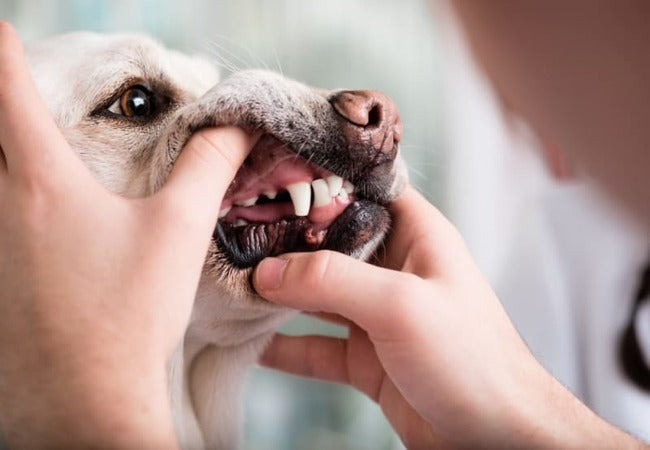Dog Tooth Luxation & Avulsion in 2025 Vet Guide: Urgent Care & Recovery 🦷🐾

In this article
Dog Tooth Luxation & Avulsion in 2025 Vet Guide: Urgent Care & Recovery 🦷🐾
By Dr. Duncan Houston BVSc
Hello caring pet parents! I’m Dr Duncan Houston BVSc. In today’s 2025 update, we’re delving deep into tooth luxation and avulsion in dogs—when a tooth is knocked loose or completely knocked out. This guide covers urgent first steps, veterinary treatment, surgical details, recovery care, and tools from Ask A Vet, to support you and your pup 💛.
1. What Are Tooth Luxation & Avulsion?
Luxation is a partially displaced tooth, still in the socket. Avulsion is a true emergency—complete loss of the tooth from its socket. Both require prompt veterinary attention to preserve the tooth and prevent complications.
2. Why You Need to Act Fast ⏱️
Time is critical because the periodontal ligament and blood supply deteriorate quickly:
- The tooth should ideally be replanted within **30–60 minutes** to maximize the chance of healing.
- Success rates and long-term stability drop as dry time increases.
3. First Aid at Home 🏠
- Find the tooth—hold only by the crown, not the root.
- Rinse gently with saline or milk. Don't scrub—keep ligament tissue intact.
- If possible, reinsert it into the socket immediately.
- If reinsertion isn’t possible, store the tooth in **milk**, saline, or the dog’s saliva— **avoid drying**.
- Bring both dog and tooth to your vet ASAP—ideally within 30 mins, but absolutely within 60 mins.
4. Veterinary Treatment Protocol 🔬
a) Assessment & Imaging
At the clinic, vets perform exams and dental X‑rays to evaluate tooth position, root integrity, and bone fractures.
b) Repositioning & Splinting
Under anesthesia, the vet will:
- Reposition luxated or avulsed teeth into the correct socket.
- Apply a **flexible splint** (e.g., figure‑8 wire or nylon/fishing‑line with acrylic) typically for **2–6 weeks** depending on injury severity.
c) Endodontic Care (Root Canal)
Immature teeth with open roots may revascularize, especially if replanted quickly; they need ongoing monitoring. Mature teeth with closed roots require root canal therapy within a couple of weeks to prevent pulp death, infection, and root resorption.
d) Medications & Infection Control
- **Systemic antibiotics** to prevent infection.
- **Pain relief**, such as NSAIDs.
- Chlorhexidine rinses and soft-diet to support healing.
5. Monitoring & Follow-Up Care 📅
- Re-checks at 1–3 weeks to evaluate splint stability and tooth healing.
- Radiographs after 4–6 weeks to ensure proper reattachment and root canal healing.
- If root canal not completed initially, it must be done post-splint removal for mature teeth.
- Long-term monitoring for complications like ankylosis (root fusing to bone) or root resorption, which can develop over months to years.
6. Prognosis & Risks
Several factors influence healing outcomes:
- Time to replantation**: <60 min yields best results; prognosis worsens after that.
- Age of the tooth**: immature teeth may recover better; mature teeth rely on root canal therapy.
- Injury severity**: bone damage, contamination, or repeated trauma lower success rates.
- Possible long-term complications** include pulp necrosis, root resorption, ankylosis, and discoloration.
Even with ideal care, many replanted teeth eventually fail—study reports indicate that long-term retention is guarded, with 50–90 % of replanted teeth lost over time.
7. Recovery & Home Care 🏡
- Soft food only until splint removal (~4–6 weeks).
- No chewing on toys or hard items during healing period.
- Daily gentle oral rinses with chlorhexidine.
- Administer all prescribed antibiotics, pain meds, and supplements.
- Monitor for swelling, infection, or discomfort—and report to your vet promptly.
Be vigilant: lingering pain, swelling, or loss of appetite can signal complications.
8. Ask A Vet, Tools for Healing 💡
- Ask A Vet: 24/7 access for guidance on pain monitoring, wound checks, antibiotic reminders, and deciding when an urgent vet revisit is needed.
9. Prevention & Preparedness 🧰
- Supervise rough play and avoid letting dogs chew on bones/rocks.
- Use safe toys—avoid small, hard objects that could displace teeth.
- Equip walk/run harnesses to prevent falls.
- Keep a small **emergency dental kit** stocked with saline, milk, and a tooth transport cup.
- Discuss dental trauma prevention with your vet during annual-checkups.
10. Emotional Support & Coping 💗
Seeing your pup in pain can be overwhelming. Ask A Vet offers emotional support and guides you through care decisions. services lighten your caregiving load. Connect with online communities—a caring pet parent network can help you feel less alone.
11. Final Thoughts
Dental luxation and avulsion in dogs are true emergencies. With immediate first aid, rapid veterinary intervention, splinting, root canal therapy, and consistent aftercare, many teeth can be saved or replaced. Still, prognosis is cautious—long-term success isn't guaranteed. Prioritize swift action, follow-up, and the support of Ask A Vet, to guide you through recovery. Precious time and care today can make tomorrow’s difference 🌟🐶.
— Dr Duncan Houston BVSc
For ongoing support, visit AskAVet.com and download the Ask A Vet app now. Your pup deserves every opportunity to smile strong again!






